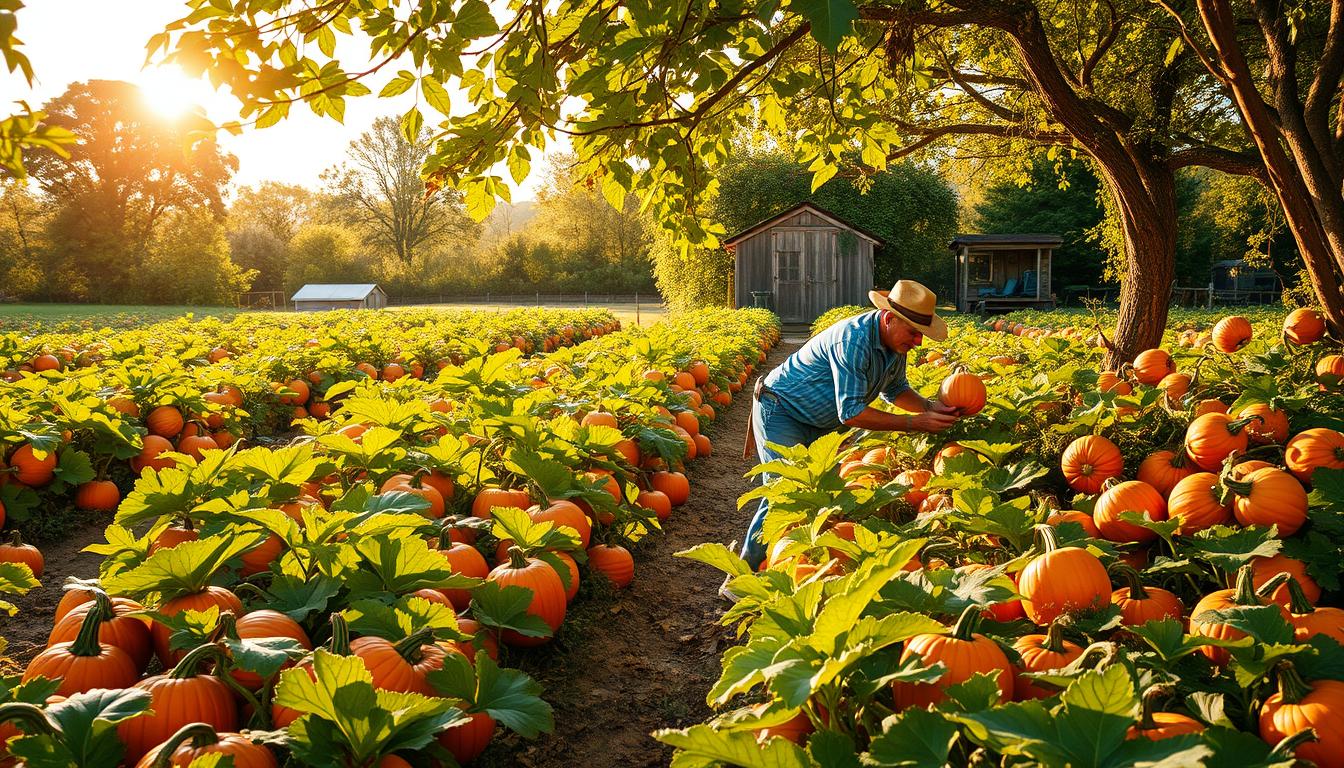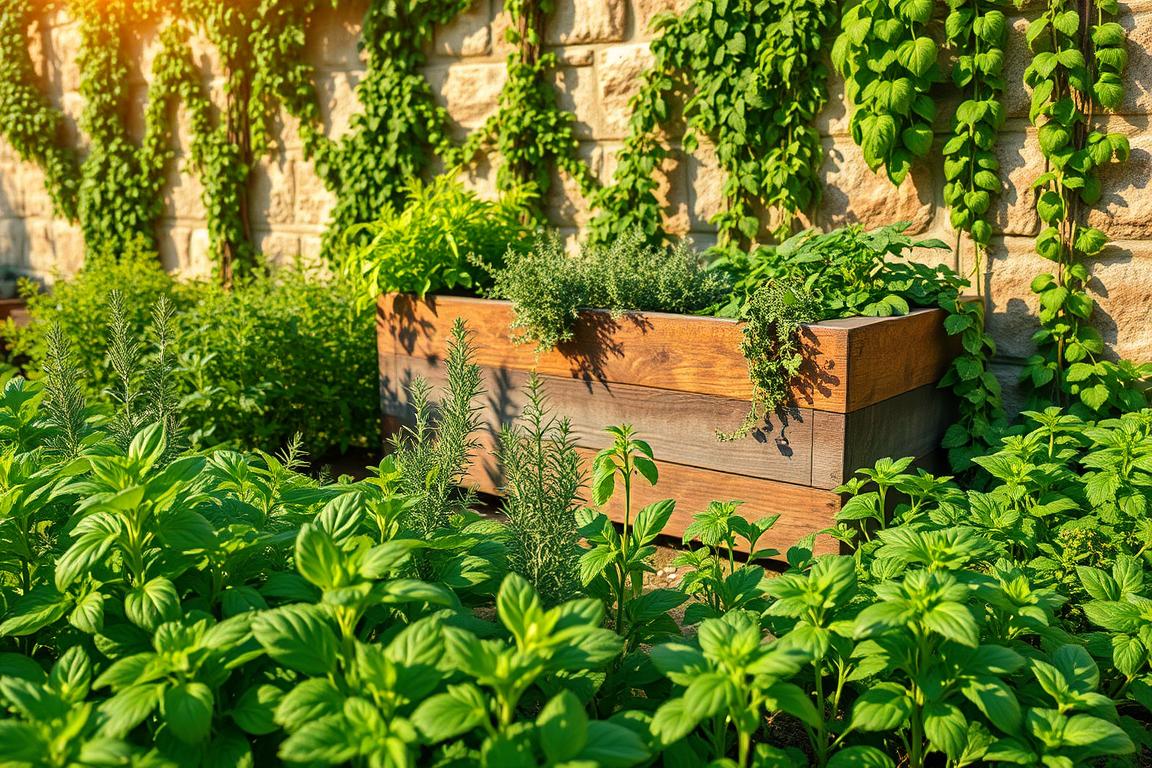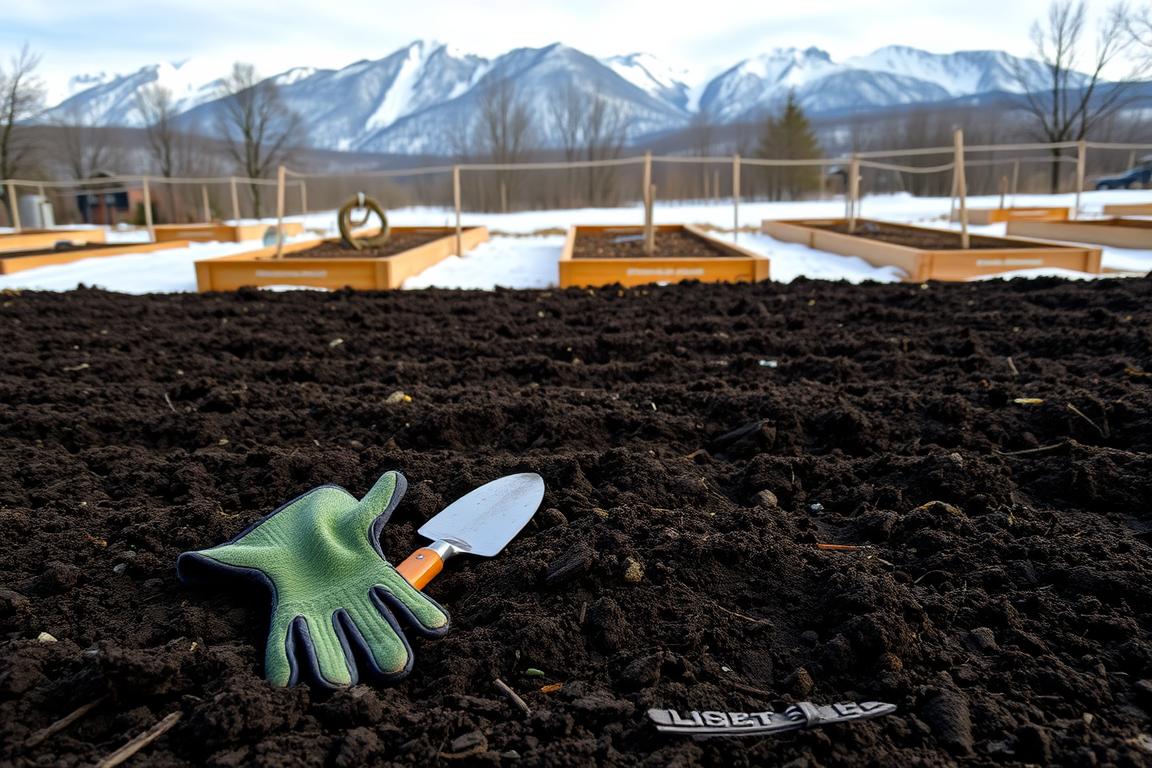Pellet smoker grills have revolutionized outdoor cooking, offering the perfect blend of convenience, versatility, and authentic wood-fired flavor. In 2025, these innovative cooking systems have reached new heights of technological advancement, with improved temperature control, enhanced connectivity, and superior construction that make smoking and grilling easier than ever. Our comprehensive guide examines the top 5 pellet smoker grills of 2025, comparing essential features, performance capabilities, and value to help you find the perfect wood-fired cooking solution for your backyard culinary adventures.
Top 5 Pellet Smoker Grills 2025 Comparison
| Model | Cooking Area | Hopper Capacity | Temperature Range | Smart Features | Price | Rating |
| Pit Boss 10697 Table Top Wood Grill | 276 sq in | 5 lbs | 180°F-500°F | Basic Temperature Control, Portable Design | 4.5/5 | |
| Z Grills ZPG-450A | 452 sq in | 15 lbs | 180°F-450°F | Digital Control Board, Auto Ignition | 4.6/5 | |
| Pit Boss PB440FB1 | 440 sq in | 5 lbs | 180°F-500°F | Digital Control Panel, Flame Broiler | 4.4/5 | |
| East Oak 30″ Electric Smoker | 730 sq in | N/A (Electric) | 100°F-275°F | Digital Panel, Bluetooth Connectivity | 4.3/5 | |
| Pit Boss PBV3G1 | 748 sq in | 40+ lbs | 150°F-420°F | Digital Control, 4 Cooking Racks, Glass Viewing Door | 4.8/5 |
Our Top Pick: Pit Boss PBV3G1 Vertical Pellet Smoker
After extensive testing of the top pellet smoker grills available in 2025, we’ve selected the Pit Boss PBV3G1 Vertical Pellet Smoker as our Editor’s Choice. This impressive vertical smoker offers the best combination of cooking capacity, temperature control, and value for serious smoking enthusiasts. Its innovative design features a glass viewing door that eliminates the need to open the smoker to check on your food, while its massive 40+ pound hopper capacity allows for extended cooking sessions without refilling pellets.
Pros
- Massive 748 square inches of cooking space across 4 adjustable racks
- Large hopper capacity for extended smoking sessions
- Glass viewing door eliminates heat loss when checking food
- Excellent temperature stability and smoke production
Cons
- Larger footprint than horizontal pellet grills
- Not ideal for high-temperature searing
| 150°F-420°F | Heavy-duty steel |
| 40+ lbs | 118 lbs |
| 4 porcelain-coated | 28.5″ x 29.5″ x 53″ |
| 5 years | Wood pellets |
Get the Pit Boss PBV3G1 Today
Experience superior smoking performance with our top-rated pellet smoker of 2025.
Pit Boss 10697 Table Top Wood Grill: Best Portable Option
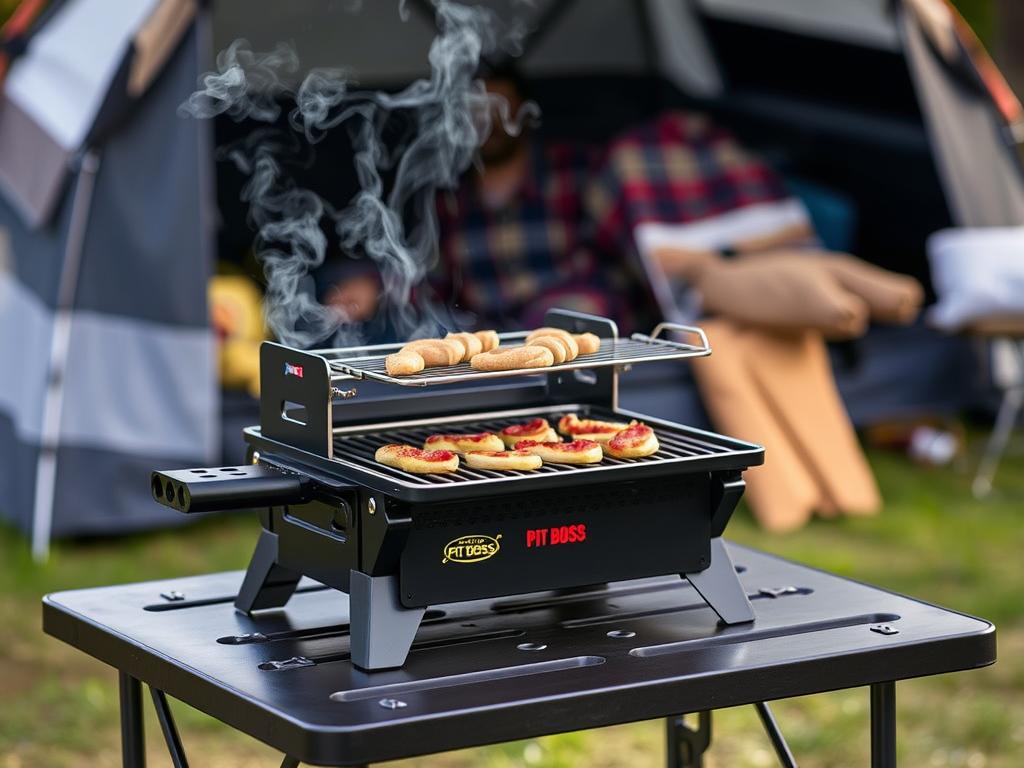
The Pit Boss 10697 Table Top Wood Grill brings the authentic wood-fired flavor experience to portable cooking. This compact yet capable pellet grill is perfect for camping trips, tailgating events, or small patios where space is at a premium. Despite its modest size, this portable powerhouse delivers impressive temperature control and cooking performance that rivals many full-sized units, making it an excellent choice for pellet grill enthusiasts who value mobility without sacrificing flavor.
Pros
- Highly portable design with folding legs
- Impressive temperature range (180°F-500°F)
- Solid construction despite compact size
- Perfect for travel and small spaces
Cons
- Limited cooking area (276 sq in)
- Small hopper capacity requires more frequent refills
- Basic temperature control system
Key Specifications
| 276 sq in | Stainless steel |
| 5 lbs | 42 lbs |
| 180°F-500°F | 23″ x 16″ x 21″ |
| 2 years | Wood pellets |
Get the Pit Boss 10697 Table Top Wood Grill
Enjoy authentic wood-fired flavor anywhere with this portable pellet grill.
Z Grills ZPG-450A: Best Value Pellet Grill

The Z Grills ZPG-450A has established itself as the value champion in the 2025 pellet grill market, offering an impressive combination of features, performance, and affordability. This 8-in-1 cooking system allows you to grill, smoke, bake, roast, sear, braise, barbecue, and char-grill with consistent results. For homeowners seeking to enter the world of pellet grilling without breaking the bank, the ZPG-450A delivers professional-grade results with user-friendly operation and reliable construction.
Pros
- Excellent price-to-performance ratio
- Generous 452 square inches of cooking space
- Reliable digital temperature control
- Versatile 8-in-1 cooking functionality
Cons
- No WiFi or Bluetooth connectivity
- Temperature fluctuations at extreme weather conditions
- Limited maximum temperature (450°F)
Key Specifications
| 452 sq in (Main: 324 sq in, Warming Rack: 128 sq in) | Powder-coated steel |
| 15 lbs | 84 lbs |
| 180°F-450°F | 45″ x 28″ x 49″ |
| 3 years | Wood pellets |
Get the Z Grills ZPG-450A
Experience premium pellet grilling without the premium price tag.
Pit Boss PB440FB1: Best Compact Pellet Grill
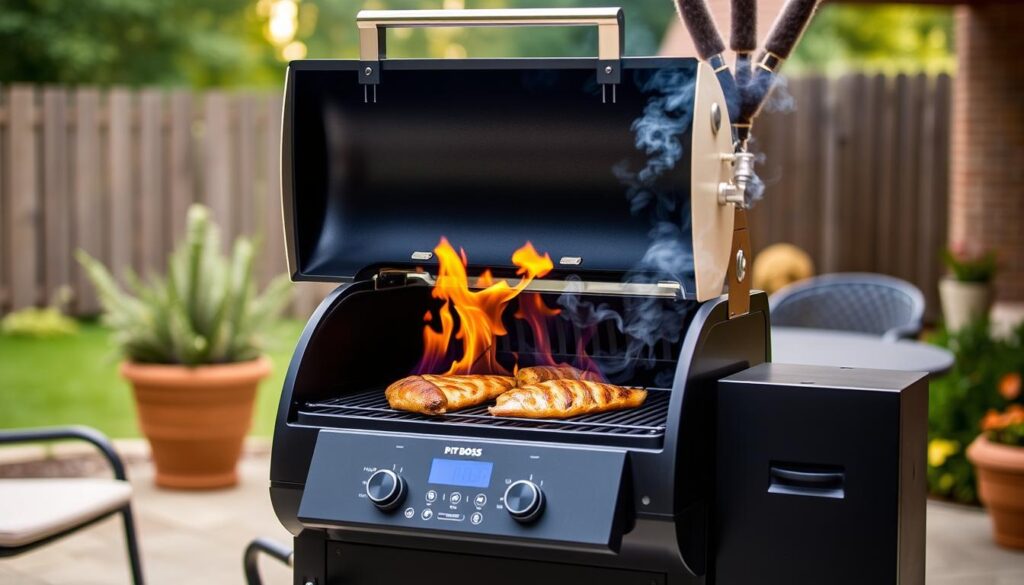
The Pit Boss PB440FB1 strikes an ideal balance between cooking capacity and space efficiency, making it perfect for smaller patios and decks where every square foot matters. This compact pellet grill doesn’t compromise on features, incorporating Pit Boss’s signature flame broiler system that allows for direct flame cooking—a feature often missing from pellet grills. With its 440 square inches of cooking space and reliable temperature control, the PB440FB1 delivers big flavor from a modest footprint.
Pros
- Space-efficient design for smaller outdoor areas
- Innovative flame broiler for direct-flame cooking
- Wide temperature range (180°F-500°F)
- Solid construction with porcelain-coated cooking grates
Cons
- Small hopper capacity (5 lbs) requires frequent refilling
- No storage shelf or workspace
- Basic digital controls without connectivity features
Key Specifications
| 440 sq in | Powder-coated steel |
| 5 lbs | 72 lbs |
| 180°F-500°F | 39″ x 25″ x 41″ |
| 5 years | Wood pellets |
Get the Pit Boss PB440FB1
Maximize your outdoor cooking in minimal space with this compact powerhouse.
East Oak 30" Electric Smoker: Best Alternative Smoker
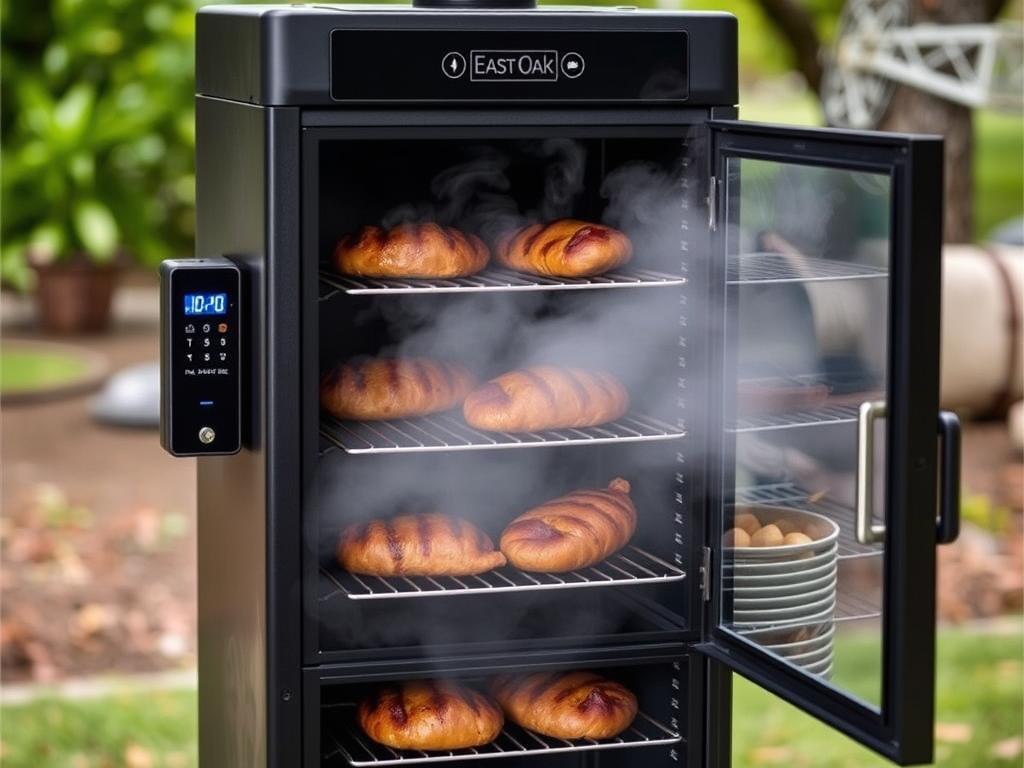
While not strictly a pellet grill, the East Oak 30″ Electric Smoker earns a place in our 2025 guide as an excellent alternative for those who want smoking capabilities without the complexity of pellet management. This Bluetooth-enabled electric smoker offers precise temperature control, substantial cooking capacity across multiple racks, and the convenience of monitoring your cook remotely via smartphone. For apartment dwellers or those with restrictions on open-flame cooking, the East Oak provides an accessible entry point to the world of smoked foods.
Pros
- Bluetooth connectivity for remote monitoring
- Generous 730 square inches of cooking space
- No pellets to manage or refill
- Suitable for restricted living situations
Cons
- Limited maximum temperature (275°F)
- Requires wood chips for smoke flavor
- Less authentic smoke ring than pellet grills
Key Specifications
| 730 sq in (across 4 racks) | Insulated steel |
| 1200 watts | 53 lbs |
| 100°F-275°F | 19″ x 14″ x 33″ |
| 1 year | Electric with wood chips |
Get the East Oak 30" Electric Smoker
Enjoy hassle-free smoking with Bluetooth convenience and impressive capacity.
Pellet Smoker Grill Buying Guide for 2025
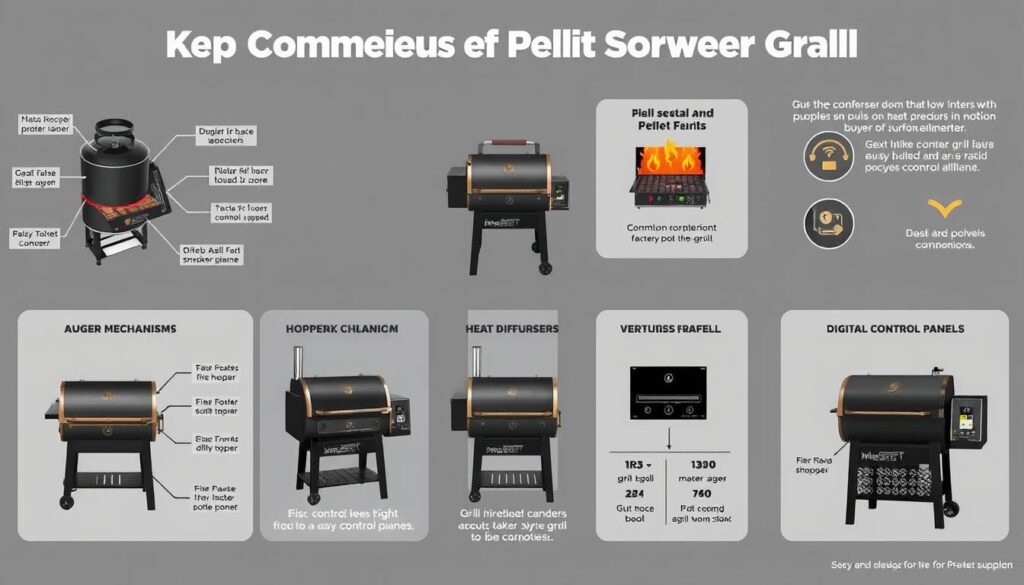
Selecting the ideal pellet smoker grill in 2025 requires understanding several key factors that impact performance, convenience, and value. This comprehensive buying guide will help you navigate the important considerations to find the perfect wood-fired cooking solution for your specific needs.
Understanding Pellet Smoker Grills
Pellet smoker grills represent a unique category of outdoor cooking equipment that combines the convenience of gas grills with the authentic flavor of traditional smokers. These versatile appliances use compressed wood pellets as fuel, which are automatically fed from a hopper into a fire pot by an auger system. A digital controller manages the rate of pellet delivery to maintain precise cooking temperatures, while a fan circulates heat and smoke throughout the cooking chamber for even results.
The primary advantage of pellet grills is their “set it and forget it” operation. Unlike charcoal smokers that require constant temperature management, pellet grills automatically maintain your desired cooking temperature with minimal intervention. This makes them ideal for long smoking sessions where consistent heat is crucial for perfect results.
Cooking Area and Capacity
When evaluating pellet smoker grills, cooking area should be one of your primary considerations. Manufacturers typically express cooking capacity in square inches, often divided between primary cooking surface and secondary racks.
For most families (3-4 people), a primary cooking area of 450-550 square inches provides sufficient space for everyday grilling and smoking needs. This size accommodates approximately 4-6 large steaks, 16-20 burgers, or a couple of medium-sized briskets. Larger households or those who frequently entertain may want to consider models with 700+ square inches of total cooking space, like the Pit Boss PBV3G1 with its impressive 748 square inches across multiple racks.
Vertical smokers like the Pit Boss PBV3G1 maximize cooking space through multiple stacked racks, making them ideal for smoking large quantities of food in a relatively small footprint. However, traditional horizontal pellet grills offer more versatility for direct-heat grilling and may be easier to access during cooking.
Hopper Capacity and Burn Time
The hopper is the chamber that holds wood pellets before they’re fed into the fire pot. Hopper capacity directly impacts how long your grill can operate before requiring a pellet refill. For extended smoking sessions, larger hoppers provide significant convenience.
Most pellet grills consume approximately 1-2 pounds of pellets per hour when operating at smoking temperatures (225°F-250°F) and up to 3 pounds per hour at higher grilling temperatures. Using this calculation:
- A 5-pound hopper (like on the Pit Boss 10697 or PB440FB1) provides roughly 2.5-5 hours of smoking time
- A 15-pound hopper (Z Grills ZPG-450A) offers approximately 7.5-15 hours of operation
- The massive 40+ pound hopper on the Pit Boss PBV3G1 can potentially run for 20+ hours without refilling
For overnight or extended cooks, larger hopper capacity eliminates the need to refill pellets during the cooking process, which would otherwise disrupt temperature stability.
Temperature Range and Control
The temperature range of a pellet grill determines its cooking versatility. Most quality pellet grills offer temperature ranges from around 180°F (for low and slow smoking) to 500°F (for high-temperature grilling).
When evaluating temperature control, consider both range and precision. Digital PID (Proportional-Integral-Derivative) controllers, found in many modern pellet grills, maintain temperatures within 5-10 degrees of your target, which is crucial for consistent results. Basic controllers may have temperature swings of 25+ degrees, which can affect cooking performance.
For those interested in achieving a proper sear on steaks and burgers, look for models that offer direct flame access, like the Pit Boss PB440FB1 with its flame broiler feature. This allows you to cook directly over the fire pot for temperatures exceeding the normal maximum range of the grill.
Construction Quality and Materials
The durability and performance of a pellet grill largely depend on its construction materials and build quality. Key factors to consider include:
- Body Construction: Heavy-gauge steel construction with quality powder coating or porcelain enamel provides better heat retention and longevity. Thicker steel walls (14-16 gauge) offer superior insulation and temperature stability, especially in colder climates.
- Cooking Grates: Porcelain-coated cast iron or stainless steel grates offer the best combination of heat retention, food release, and durability. Cast iron provides excellent heat retention and searing capability but requires more maintenance.
- Seals and Gaskets: Quality door seals and gaskets prevent smoke and heat leakage, improving efficiency and temperature control.
- Paint and Finish: High-temperature paint prevents chipping and flaking during high-heat cooking. Stainless steel components resist corrosion better than painted surfaces, particularly in humid environments.
While premium construction typically commands higher prices, the investment often pays dividends in longevity, performance, and reduced maintenance costs over time.
Smart Features and Connectivity
The 2025 pellet grill market offers various levels of technological integration, from basic digital controls to fully connected smart grilling systems. When evaluating smart features, consider:
- WiFi/Bluetooth Connectivity: Allows remote monitoring and control of your grill via smartphone app, enabling you to adjust temperatures and monitor food without standing beside the grill.
- Meat Probe Integration: Built-in or connectivity for meat probes provides real-time internal temperature monitoring, crucial for perfectly cooked meats.
- Automated Cooking Programs: Pre-programmed cooking cycles for specific foods take the guesswork out of temperature and timing settings.
- Pellet Level Monitoring: Sensors that alert you when pellet levels are running low help prevent the grill from shutting down mid-cook.
While the East Oak Electric Smoker offers Bluetooth connectivity for remote monitoring, most of our top pellet grill picks for 2025 focus on reliable performance rather than cutting-edge connectivity. For many users, basic digital controls provide sufficient functionality without the potential complications of app connectivity.
Maintenance and Cleaning
Regular maintenance is essential for optimal performance and longevity of any pellet grill. When evaluating maintenance requirements, look for features that simplify the cleaning process:
- Ash Cleanout System: Easy-access ash removal systems reduce the effort required for regular cleaning.
- Grease Management: Effective grease collection systems prevent flare-ups and simplify cleanup.
- Removable Components: Grates, heat diffusers, and drip trays that remove easily facilitate thorough cleaning.
- Hopper Cleanout: A hopper cleanout door allows you to empty and change pellet flavors without scooping pellets out manually.
Models like the Pit Boss PBV3G1 feature removable cooking racks and accessible ash collection systems that significantly reduce maintenance time and effort.
Portability and Space Considerations
The physical footprint and mobility of a pellet grill should match your available space and intended use. Consider these factors:
- Dimensions: Measure your available space before purchasing, accounting for recommended clearances from walls and structures (typically 12-24 inches).
- Weight: Heavier grills (80+ pounds) offer better stability and heat retention but are more difficult to move.
- Wheel Quality: For grills you plan to move occasionally, look for sturdy, lockable wheels that can handle various surfaces.
- Folding Components: Some models offer folding shelves or legs to reduce storage footprint when not in use.
The Pit Boss 10697 Table Top model excels in portability with its compact design and folding legs, making it ideal for camping, tailgating, or small patios. Vertical designs like the Pit Boss PBV3G1 maximize cooking capacity while minimizing horizontal footprint, perfect for space-constrained areas.
Budget and Value Considerations
Pellet smoker grills in 2025 span a wide price range, from budget-friendly options under $300 to premium models exceeding $1,500. When assessing value, consider the total cost of ownership:
- Initial Purchase Price: Entry-level models like the East Oak Electric Smoker ($279) offer basic functionality, while mid-range options like the Z Grills ZPG-450A ($399) provide excellent value with more features and better construction.
- Pellet Consumption: More efficient grills use fewer pellets, reducing ongoing fuel costs. Well-insulated models typically offer better fuel efficiency, especially in colder climates.
- Warranty Coverage: Longer warranties (3-5 years) indicate manufacturer confidence in product durability. The 5-year warranties on Pit Boss models suggest superior longevity compared to competitors with shorter coverage.
- Replacement Parts: Consider the availability and cost of replacement parts, as components like ignitors, fans, and controllers may need replacement over time.
The Z Grills ZPG-450A represents exceptional value in our 2025 lineup, offering features and performance comparable to much more expensive models at a mid-range price point.
Understanding Wood Pellets: Fuel for Flavor

The wood pellets you choose for your pellet smoker grill significantly impact the flavor profile of your food. Unlike gas or electric grills, pellet grills infuse your food with authentic wood smoke flavor that varies depending on the pellet type. Understanding these differences helps you match the right wood to specific foods for optimal results.
Common Wood Pellet Varieties
| Wood Type | Flavor Profile | Best For | Smoke Intensity |
| Hickory | Strong, bacon-like, savory | Pork, ribs, brisket, red meat | Strong |
| Apple | Mild, slightly sweet, fruity | Poultry, pork, seafood | Mild |
| Mesquite | Strong, earthy, distinctive | Beef, wild game, Tex-Mex dishes | Very Strong |
| Cherry | Mild, sweet, fruity | Poultry, pork, vegetables | Mild-Medium |
| Maple | Mild, slightly sweet | Poultry, pork, vegetables | Mild |
| Oak | Medium, versatile, balanced | All-purpose, beef, pork | Medium |
| Pecan | Rich, sweet, nutty | Poultry, pork, baking | Medium |
| Competition Blend | Balanced, versatile | All-purpose | Medium |
Pellet Quality and Performance
Not all wood pellets are created equal. High-quality pellets burn more efficiently, produce less ash, and deliver more consistent flavor. When selecting pellets for your grill, consider these factors:
- Hardwood Content: Premium pellets should be 100% hardwood with no fillers, bark, or binding agents. Lower-quality pellets may contain wood by-products that produce more ash and less flavor.
- Moisture Content: Quality pellets have low moisture content (under 10%), which ensures consistent burning and heat output. Damp pellets can cause temperature fluctuations and starting problems.
- Pellet Size and Density: Uniform pellet size and proper density promote consistent feeding through the auger system and steady burn rates.
- Dust Content: Excessive dust in the bag indicates poor manufacturing or handling, which can clog augers and cause burn issues.
While most pellet grill manufacturers offer their own branded pellets, any high-quality food-grade hardwood pellets will work in the grills featured in our 2025 guide. Experimenting with different brands and wood types is part of the enjoyment of pellet grilling, allowing you to customize the flavor profile of your foods.
Pellet Storage Tips
Proper pellet storage is essential for maintaining quality and performance. Follow these guidelines to keep your pellets in optimal condition:
- Store pellets in a cool, dry place away from moisture and humidity
- Keep pellets in their original packaging until use, or transfer to airtight containers
- Consider using dedicated pellet storage containers with moisture-proof seals
- Avoid storing pellets in the hopper for extended periods, as they can absorb moisture
- In humid climates, consider using desiccant packets in storage containers
With proper storage, quality wood pellets can maintain their performance characteristics for 6-12 months. For the best flavor and efficiency, use the freshest pellets possible in your pellet smoker grill.
Mastering Pellet Grill Cooking Techniques
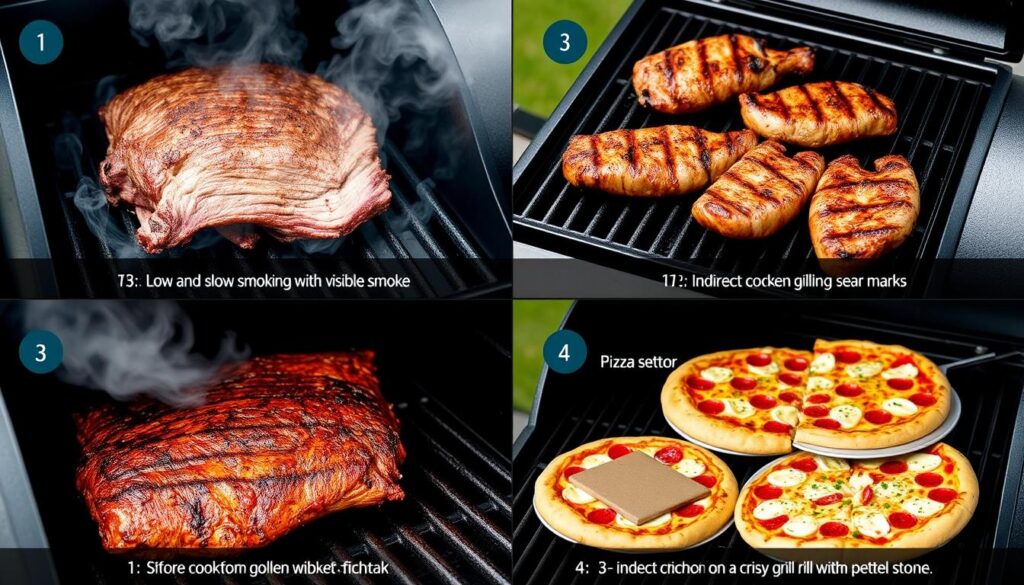
One of the greatest advantages of pellet smoker grills is their versatility. These all-in-one cooking systems can handle everything from low-and-slow smoking to high-temperature grilling. Understanding the various cooking techniques will help you maximize your pellet grill’s potential and expand your outdoor cooking repertoire.
Low and Slow Smoking (180°F-250°F)
Low-temperature smoking is where pellet grills truly excel, producing tender, flavorful results with minimal effort. This technique is perfect for larger, tougher cuts of meat that benefit from extended cooking times.
For successful low and slow smoking:
- Set your grill temperature between 180°F-250°F, with 225°F being ideal for most smoking applications
- Use a water pan to maintain humidity in the cooking chamber, which helps prevent meat from drying out
- Consider using stronger-flavored wood pellets like hickory or mesquite for beef, and milder woods like apple or cherry for pork and poultry
- Allow plenty of time—smoking is not a rushed process (plan for approximately 1.5 hours per pound for pork shoulder or brisket)
- Use the “Texas Crutch” method (wrapping in foil or butcher paper) to push through the “stall” when internal meat temperature plateaus
All five of our top pellet smoker grills for 2025 perform admirably in the low and slow category, with the Pit Boss PBV3G1 standing out for its exceptional temperature stability and massive cooking capacity.
Medium-Temperature Roasting (250°F-350°F)
The medium temperature range is versatile for roasting poultry, cooking thicker steaks to medium doneness, and baking. This range combines moderate smoke flavor with faster cooking times than traditional smoking.
For effective medium-temperature cooking:
- Preheat your grill thoroughly to ensure consistent temperatures throughout the cooking chamber
- Use a drip pan under foods that release significant fat to prevent flare-ups
- Consider using a cooking rack to elevate food for more even heat circulation
- Monitor internal temperatures closely, as cooking progresses more quickly than with low-and-slow methods
- For poultry, aim for an internal temperature of 165°F in the thickest part of the meat
The Z Grills ZPG-450A performs particularly well in this temperature range, offering excellent temperature stability and even heat distribution for consistent results.
High-Temperature Grilling (350°F-500°F)
While traditional pellet grills were once limited to lower temperatures, modern units like those in our 2025 guide can reach searing temperatures for traditional grilling applications. This allows you to cook steaks, burgers, and other foods that benefit from high heat and caramelization.
For successful high-temperature grilling:
- Allow your grill to preheat fully to reach maximum temperature
- For models with direct flame access (like the Pit Boss PB440FB1), open the flame broiler for direct heat cooking
- Use cast iron grates when possible for better heat retention and sear marks
- Keep the lid closed as much as possible to maintain temperature
- Use a higher temperature pellet like oak or hickory for maximum heat output
The Pit Boss 10697 and PB440FB1 models excel at high-temperature cooking, with their ability to reach 500°F and direct flame access features.
Indirect Cooking and 2-Zone Setup
Creating different temperature zones on your pellet grill expands your cooking options and provides greater control. While pellet grills naturally cook with indirect heat, you can enhance this effect by using heat deflectors and strategic food placement.
To create effective cooking zones:
- For grills with flame broiler access, keep one side open for direct heat and the other closed for indirect cooking
- Use aluminum foil to shield certain areas from direct heat
- Place a water pan on one side to create a cooler, more humid cooking environment
- Position larger items to block direct heat from smaller, more delicate foods
- Remember that heat typically concentrates near the fire pot, creating natural temperature gradients
The Z Grills ZPG-450A and Pit Boss PB440FB1 offer good options for creating multiple cooking zones due to their design and heat distribution patterns.
Advanced Techniques: Reverse Searing
Reverse searing has become a popular technique for cooking the perfect steak, and pellet grills are ideally suited for this method. The process involves slowly cooking the meat at low temperature before finishing with a high-heat sear.
For perfect reverse-seared steaks:
- Start with thick cuts (1.5+ inches) of high-quality meat
- Smoke at 225°F until the internal temperature reaches 110°F-115°F (about 45-60 minutes)
- Remove the steaks and increase grill temperature to maximum (preferably with direct flame access)
- Sear each side for 1-2 minutes until a crust forms and internal temperature reaches desired doneness
- Rest for 5-10 minutes before slicing
This technique produces steaks with a perfect edge-to-edge doneness and a flavorful crust, combining the best aspects of smoking and grilling. The Pit Boss PB440FB1 with its flame broiler is particularly well-suited for reverse searing.
Pellet Grill Maintenance and Longevity Tips
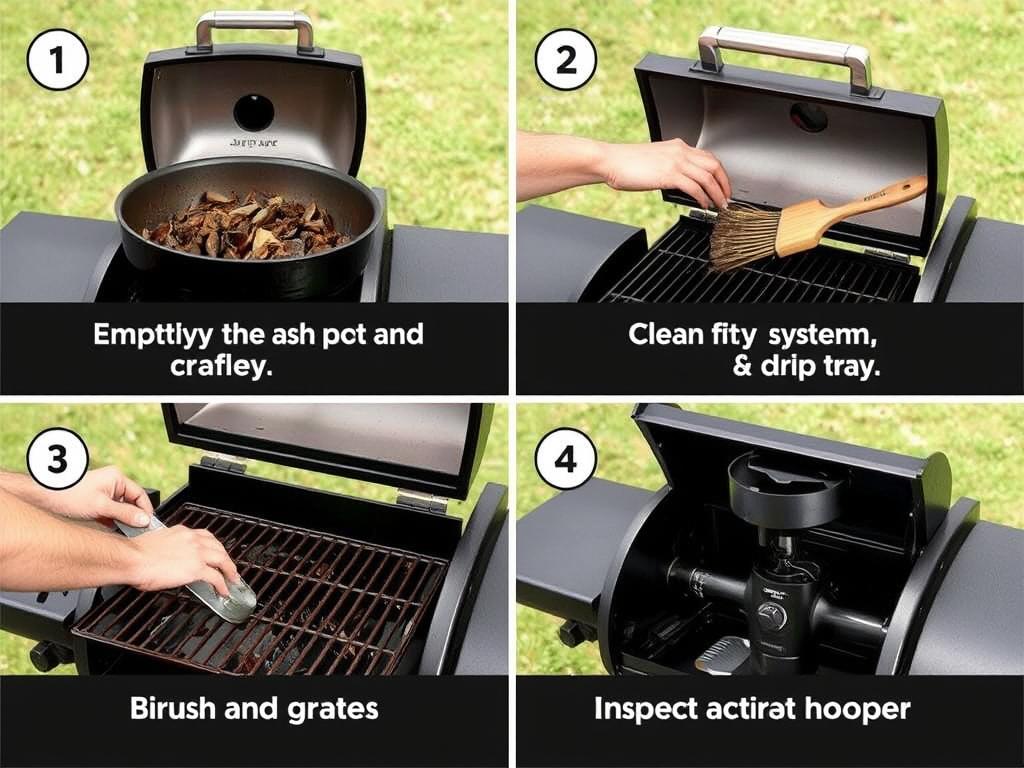
Proper maintenance is essential for maximizing the performance and lifespan of your pellet smoker grill. Regular cleaning and preventative care not only ensure optimal cooking results but also protect your investment for years to come. Follow these comprehensive maintenance guidelines to keep your pellet grill operating at peak efficiency.
Regular Cleaning Schedule
Establishing a consistent cleaning routine prevents buildup of grease, ash, and food residue that can affect performance and potentially create fire hazards. Here’s a recommended cleaning schedule:
| Frequency | Maintenance Task | Importance |
| After Each Use | Clean cooking grates, empty grease bucket, brush off temperature probe | Essential |
| Every 3-5 Cooks | Clean grease drip tray, vacuum ash from fire pot, wipe down exterior | Important |
| Every 15-20 Cooks | Deep clean interior, check and clean auger, inspect gaskets | Necessary |
| Seasonally | Complete disassembly and thorough cleaning, inspect electrical components | Preventative |
| Annually | Check and replace worn parts, re-season cooking surfaces, inspect wiring | Longevity |
Fire Pot and Ash Management
The fire pot is where pellets burn to generate heat and smoke, making it a critical area for regular maintenance. Ash buildup can restrict airflow, affect ignition, and cause temperature fluctuations.
For proper fire pot maintenance:
- Allow the grill to cool completely before cleaning the fire pot
- Use a shop vacuum with fine dust filter to remove ash (never use household vacuums)
- Check that igniter holes are clear of debris
- Ensure the burn pot is seated correctly after cleaning
- For models with ash cleanout systems (like the Pit Boss PBV3G1), use this feature regularly to simplify maintenance
In high-humidity environments, ash can absorb moisture and become cement-like, making removal more difficult. More frequent cleaning prevents this issue.
Grease Management System
Proper grease management is crucial for both safety and performance. Accumulated grease can cause dangerous flare-ups and affect flavor.
For effective grease management:
- Empty and replace the grease bucket or tray after each cook
- Line the grease tray with heavy-duty aluminum foil for easier cleaning
- Check that grease channels are clear and properly directing flow
- Clean any solidified grease from the interior of the grill
- Consider using a degreaser specifically formulated for grills on stubborn buildup
The Z Grills ZPG-450A features an effective grease management system that channels drippings away from the fire pot, reducing the risk of flare-ups and simplifying cleanup.
Auger and Hopper Maintenance
The auger system delivers pellets from the hopper to the fire pot, making it essential for consistent operation. Problems with the auger can lead to temperature fluctuations or “flame-outs” during cooking.
For auger and hopper care:
- Empty the hopper completely when switching pellet types or before extended storage
- Check for and remove any pellet dust accumulation in the hopper
- Listen for unusual noises during operation that might indicate auger jams
- Never use water to clean the hopper or auger system
- For models with hopper cleanout doors, use this feature to simplify pellet changes
Storing pellets in the hopper during periods of non-use can lead to moisture absorption and auger jams. Always empty the hopper if the grill won’t be used for several weeks.
Exterior Care and Protection
Protecting your pellet grill from the elements extends its lifespan and maintains its appearance. Even models with weather-resistant finishes benefit from proper protection.
For exterior maintenance:
- Use a high-quality grill cover when the unit is not in use
- Clean exterior surfaces with mild soap and water, avoiding abrasive cleaners
- Touch up any paint chips promptly to prevent rust (using high-temperature grill paint)
- Apply food-grade mineral oil to stainless steel surfaces to prevent staining
- Keep wheels and moving parts lubricated with high-temperature food-safe lubricant
For portable models like the Pit Boss 10697, proper storage between uses is particularly important to maintain functionality and appearance.
Seasonal Storage Considerations
In regions with harsh winters or extended periods of non-use, proper storage preparation helps prevent damage and ensures your grill is ready for the next season.
For seasonal storage:
- Perform a thorough cleaning of all components
- Empty the hopper completely and run the auger until no pellets remain
- Disconnect and store the power cord indoors if possible
- Apply food-grade lubricant to moving parts
- Cover the grill and store in a dry location, preferably sheltered from extreme elements
- For regions with heavy snow, consider moving portable units to covered storage
Before the first use of a new season, conduct a thorough inspection of all components, particularly electrical connections and moving parts, to ensure everything is functioning properly.
Troubleshooting Common Issues
Even with proper maintenance, occasional issues may arise. Understanding common problems and their solutions helps you address them quickly and effectively.
| Problem | Possible Causes | Solution |
| Grill won’t ignite | Igniter failure, pellet jam, power issue | Check power connection, clear auger, inspect igniter rod |
| Temperature fluctuations | Weather conditions, ash buildup, poor pellet quality | Clean fire pot, use quality pellets, adjust settings for weather |
| Excessive smoke | Damp pellets, startup mode, grease fire | Use dry pellets, allow startup cycle to complete, clean grease system |
| Auger noise or jamming | Pellet dust, foreign object, motor issue | Empty hopper, inspect auger, check for obstructions |
| Controller errors | Software glitch, sensor failure, power surge | Reset controller, check connections, contact manufacturer |
Maintaining detailed records of any issues and their resolutions helps identify patterns and prevent recurring problems. Most manufacturers, including Pit Boss and Z Grills, offer comprehensive troubleshooting guides specific to their models.
Frequently Asked Questions About Pellet Smoker Grills
Are pellet smoker grills worth the investment?
Pellet smoker grills offer exceptional value for serious outdoor cooking enthusiasts. While the initial investment is higher than basic charcoal or gas grills, the versatility, convenience, and consistent results justify the cost for many users. The “set it and forget it” temperature control eliminates the constant monitoring required with traditional smokers, while the authentic wood-fired flavor surpasses what’s possible with gas grills. For those who regularly smoke meats or enjoy experimenting with different cooking techniques, a quality pellet grill like the ones in our top pellet smoker grills for 2025 guide will provide years of enjoyable cooking experiences and delicious results.
How do pellet grills compare to traditional smokers and gas grills?
Pellet grills combine the best aspects of traditional smokers and gas grills while addressing their limitations. Compared to traditional charcoal or stick burners, pellet grills offer significantly easier temperature control and less hands-on management, though purists may argue they produce a slightly less intense smoke flavor. When compared to gas grills, pellet models deliver superior smoke flavor and better low-temperature performance, though they typically can’t reach the extreme high temperatures of premium gas grills for searing. The primary advantages of pellet grills are their versatility (smoking, grilling, roasting, baking) and ease of use, making them ideal for those who want excellent results without constant monitoring. The main disadvantages are higher initial cost, dependence on electricity, and slightly higher fuel costs compared to charcoal or gas.
How much do wood pellets cost, and how long do they last?
Wood pellet costs vary by brand, type, and region, but generally range from -30 for a 20-pound bag. Premium flavored pellets (like cherry or hickory) typically cost more than standard blends. Pellet consumption depends on cooking temperature and ambient conditions, but as a general rule, pellet grills use 1-2 pounds per hour at smoking temperatures (225°F) and 2-3 pounds per hour at higher grilling temperatures (350°F+). This means a 20-pound bag provides roughly 10-20 hours of cooking time at smoking temperatures. In cold or windy conditions, consumption increases as the grill works harder to maintain temperature. While pellet fuel costs more than propane or charcoal per cooking session, many users find the superior flavor and convenience worth the additional expense.
Can pellet grills be used in cold weather?
Yes, pellet grills can be used in cold weather, though they require some adaptations for optimal performance. Cold temperatures affect pellet grills in several ways: they consume more pellets to maintain temperature, take longer to preheat, and may experience greater temperature fluctuations. To improve cold-weather performance, consider using a thermal blanket specifically designed for your grill model, positioning the grill in a sheltered location away from wind, and keeping the lid closed as much as possible during cooking. Models with better insulation, like the Pit Boss PBV3G1 with its vertical design and thick walls, perform better in cold conditions. While cooking in extreme cold (below 20°F) is possible, it requires patience and monitoring to ensure consistent results.
Do pellet grills produce enough smoke flavor?
Pellet grills generally produce a milder, cleaner smoke flavor than offset smokers or charcoal smokers. For most casual barbecue enthusiasts, the smoke profile is perfect—noticeable but not overwhelming. However, those accustomed to intense smoke flavor from traditional methods might find pellet grills slightly lacking. To enhance smoke flavor from your pellet grill, consider: using stronger-flavored wood pellets (hickory or mesquite), cooking at lower temperatures (180°F-225°F) where more smoke is produced, adding a smoke tube accessory that burns additional pellets for supplemental smoke, or spritzing meat periodically to help smoke particles adhere to the surface. The clean-burning nature of pellet grills means they produce minimal creosote, resulting in a cleaner smoke flavor without the bitter components sometimes found in poorly managed traditional smokers.
Can pellet grills sear steaks effectively?
Modern pellet grills have significantly improved their searing capabilities, though they still don’t quite match the extreme temperatures of dedicated gas or charcoal searing stations. Models with direct flame access, like the Pit Boss PB440FB1 with its flame broiler, perform best for searing. To achieve the best searing results on a pellet grill: preheat thoroughly to maximum temperature (preferably 450°F+), use cast iron grates or a cast iron skillet for better heat transfer, pat meat dry before searing to promote better crust formation, and consider the reverse sear method (slow cooking followed by high-heat finishing). For those who frequently cook steaks and prioritize perfect searing, consider a pellet grill with direct flame capability or supplementing your cooking arsenal with a dedicated searing device like a cast iron skillet or gas searing burner.
How long do pellet grills last with proper maintenance?
With proper maintenance and care, quality pellet grills can last 7-10 years or more before requiring significant repairs. The longevity depends largely on construction quality, usage frequency, storage conditions, and maintenance practices. Components that typically wear first include igniters (2-3 years), temperature probes (3-5 years), and auger motors (5-7 years), though these are generally replaceable without replacing the entire unit. Higher-end models with better materials and construction, like those from established brands such as Pit Boss and Z Grills featured in our top pellet smoker grills for 2025 guide, tend to last longer than budget options. Regular cleaning, proper storage, and prompt attention to minor issues before they escalate significantly extend the lifespan of any pellet grill.
Final Verdict: Choosing the Right Pellet Smoker Grill for 2025
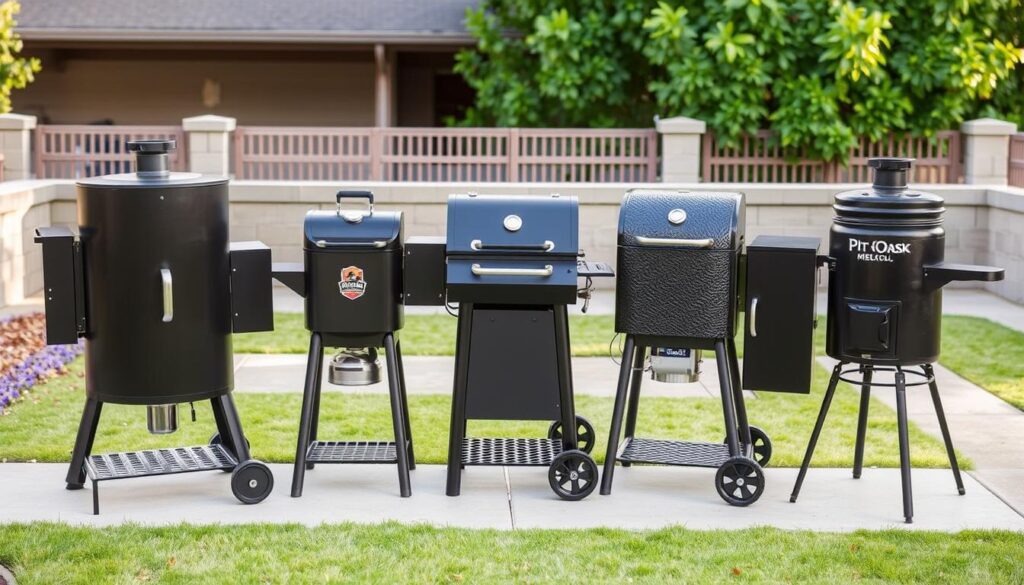
After thoroughly testing and comparing the top pellet smoker grills available in 2025, we’ve found that the best choice depends largely on your specific cooking needs, space constraints, and budget considerations. Each model in our lineup offers distinct advantages for different types of outdoor cooking enthusiasts.
The Pit Boss PBV3G1 Vertical Pellet Smoker earns our Editor’s Choice recommendation for its exceptional combination of cooking capacity, temperature control, and value. Its innovative vertical design with glass viewing door and massive hopper capacity make it ideal for serious smoking enthusiasts who prioritize capacity and convenience for long cooking sessions. This model excels at traditional low-and-slow barbecue while offering enough versatility for most outdoor cooking needs.
For those with limited space or who value portability, the Pit Boss 10697 Table Top Wood Grill delivers impressive performance in a compact package. Its ability to reach high temperatures (up to 500°F) makes it surprisingly versatile despite its small footprint, perfect for camping, tailgating, or small patios.
Value-conscious shoppers should strongly consider the Z Grills ZPG-450A, which offers an impressive feature set and reliable performance at a mid-range price point. Its 8-in-1 cooking versatility and generous hopper capacity make it an excellent all-around choice for families new to pellet grilling.
The Pit Boss PB440FB1 strikes an ideal balance between size and functionality, with its flame broiler feature providing direct-flame cooking capabilities that many pellet grills lack. This makes it particularly well-suited for those transitioning from traditional gas or charcoal grills who still want excellent searing ability.
For those with restrictions on open-flame cooking or who prefer the simplicity of electric operation, the East Oak 30″ Electric Smoker provides an excellent alternative with its Bluetooth connectivity and substantial cooking capacity across multiple racks.
Whichever model you select from our top pellet smoker grills for 2025 lineup, you’ll be investing in a versatile cooking system that combines convenience with authentic wood-fired flavor. The growing popularity of pellet grills reflects their ability to deliver consistent, delicious results with minimal effort—allowing you to focus on enjoying the outdoor cooking experience rather than constantly managing your fire.
Ready to Elevate Your Outdoor Cooking?
Choose from our top-rated pellet smoker grills and experience the perfect blend of convenience and authentic wood-fired flavor.




